10 Effective Ways to Prevent Fleas From Biting Your Dog
Preventing fleas from biting your dog involves a multi-faceted approach. Utilize vet-recommended spot-on treatments and oral medications. Regular use of flea shampoos, collars, and dips can also be effective. Maintain a clean home by vacuuming regularly and washing your dog’s bedding. Use household sprays, foggers, and flea traps to reduce indoor infestations. Guarantee your yard is well-maintained, using repellents and limiting wildlife access. A thorough strategy that includes regular grooming and professional advice will keep your dog comfortable and flea-free. Learn more about each method for comprehensive protection and to keep your dog healthy and happy.
Key Takeaways
- Use spot-on treatments to kill adult fleas and interrupt their life cycle.
- Administer oral medications for fast-acting relief and long-term protection.
- Regularly clean your house, vacuum, and wash dog bedding in hot water.
- Maintain a well-manicured yard and remove organic matter to reduce flea habitats.
- Employ non-toxic outdoor control products like diatomaceous earth and nematodes.
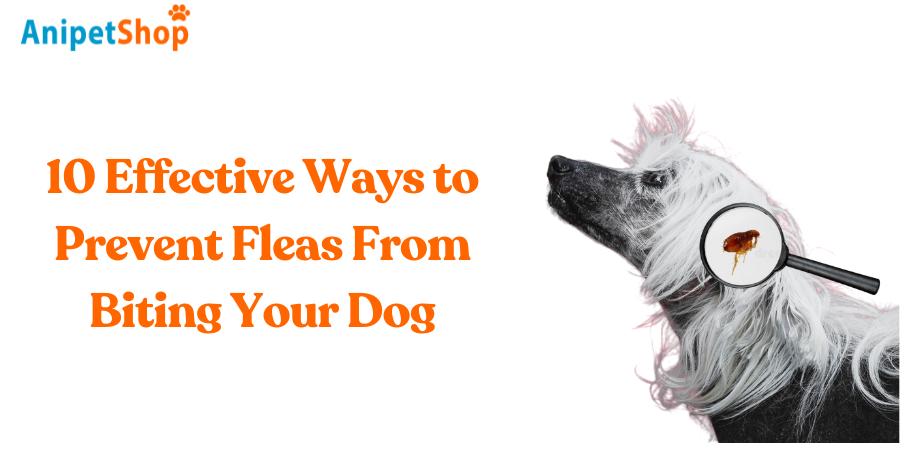
Spot-on Treatments
Spot-on treatments are a highly effective method for preventing fleas from infesting and biting your dog. These topical solutions are applied directly to the skin, usually between the shoulder blades or along the back, where your pet cannot easily lick it off. The active ingredients in these treatments are designed to kill adult fleas and interrupt the flea life cycle, thereby preventing future infestations.
One of the primary advantages of spot-on treatments is their ease of use. Most come in pre-measured doses tailored to your dog’s weight, ensuring accurate application. This precision is critical for both efficacy and safety. Once applied, the medication quickly spreads through the oils on the dog’s skin, providing thorough protection that typically lasts for 30 days. This monthly application schedule is convenient for pet owners and helps to maintain consistent protection.
Spot-on treatments contain various active ingredients, such as fipronil, imidacloprid, or permethrin. Each of these chemicals works in different ways to target fleas at various stages of their lifecycle. For instance, fipronil disrupts the central nervous system of fleas, leading to their death, while imidacloprid acts on the nervous system to cause paralysis and death.
It’s important to consult your veterinarian to determine which product is best suited for your dog, considering factors such as age, weight, and any pre-existing health conditions.
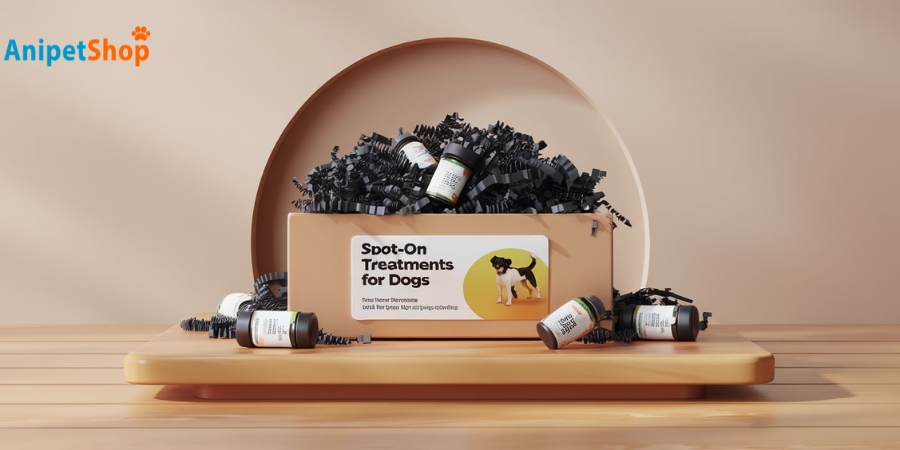
Oral Medications
Oral medications offer an effective alternative for preventing fleas from biting your dog, working systemically to eliminate parasites. These medications are typically administered in the form of chewable tablets or pills, making them a convenient option for pet owners.
The active ingredients in these medications circulate through your dog’s bloodstream, attacking fleas that bite and thereby disrupting their life cycle.
Several types of oral flea treatments are available, each offering various benefits and durations of effectiveness. Some products provide fast-acting relief, killing adult fleas within hours, while others offer long-term protection, preventing infestations for up to three months. This versatility allows pet owners to choose a product that best suits their dog’s specific needs and lifestyle.
One of the primary advantages of oral medications is their ability to deliver consistent dosage levels, ensuring reliable protection. Unlike topical treatments, which can be affected by bathing, swimming, or weather conditions, oral medications remain effective regardless of external factors. This makes them an excellent choice for active dogs that frequently engage in outdoor activities.
Additionally, oral flea medications have been shown to have fewer incidences of adverse skin reactions compared to some topical treatments. However, it is essential to consult with a veterinarian before starting any new medication, as certain products may not be suitable for dogs with specific health conditions or those taking other medications.

Flea Shampoos
Flea shampoos offer an immediate solution for eliminating fleas from your dog’s coat, providing both relief and cleanliness. These specially crafted shampoos are made to exterminate fleas upon contact, making them an effective initial step in flea management. The active components in flea shampoos commonly consist of pyrethrins, permethrins, or natural oils like eucalyptus or citronella, all recognized for their insecticidal properties.
When using a flea shampoo, it is essential to adhere to the instructions on the label diligently. Start by thoroughly wetting your dog’s coat with lukewarm water. Apply the shampoo liberally, beginning from the head and progressing downwards to the tail, making sure you steer clear of getting the product near your dog’s eyes, ears, or mouth. Gently massage the shampoo into the coat and skin, allowing it to rest for the suggested period, typically around 5-10 minutes, to guarantee optimal effectiveness.
Thoroughly rinse your dog to eliminate all remnants of the shampoo, as any leftover residue can lead to skin irritation. It is also recommended to utilize a flea comb post-bathing to eliminate any remaining fleas and eggs that may be present in the fur.
While flea shampoos are efficient in eradicating existing fleas, they do not offer long-term protection. As a result, it is often necessary to complement this treatment with other preventive measures, like regular grooming and maintaining a hygienic living environment, to ensure thorough flea control.
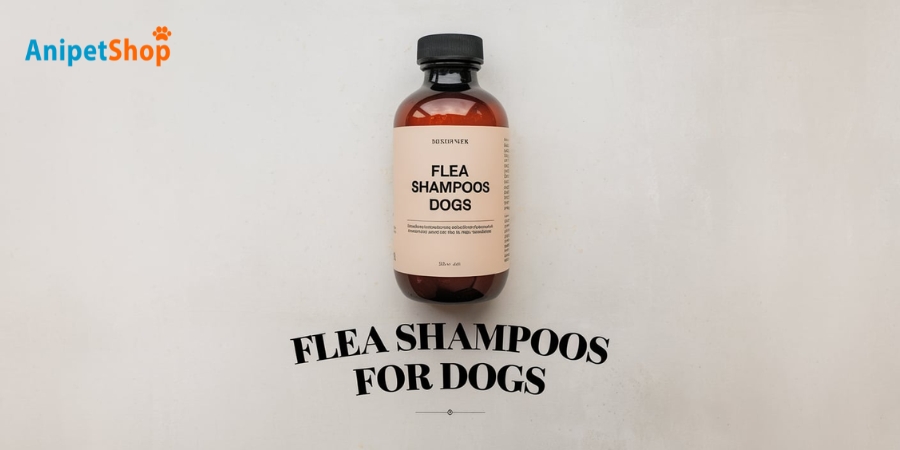
Flea Collars
Among the various methods to combat flea infestations, using flea collars stands out as an effective long-term preventive measure for safeguarding your dog. Flea collars are designed to release active ingredients that repel and kill fleas, offering continuous protection over an extended period. This makes them a convenient option for pet owners who seek a low-maintenance approach to flea control.
Modern flea collars have greatly improved over the years. Many utilize advanced technologies that guarantee the gradual release of insecticides or insect growth regulators. These substances spread over the dog’s skin and coat, providing thorough coverage. Some collars can protect your dog for up to eight months, making them highly efficient for long-term use.
When selecting a flea collar, it is essential to take into account the specific needs of your dog. Factors such as the dog’s size, age, and any existing health conditions should be considered. Additionally, the effectiveness of the collar’s active ingredients against local flea species is an important factor to think about. Consulting your veterinarian can provide valuable guidance in choosing the most appropriate product for your pet.
Application is simple: merely secure the collar around your dog’s neck, ensuring it fits snugly but still allows room for two fingers to slip underneath. Regular monitoring is vital to make sure the collar remains effective and does not cause irritation. Periodic inspection helps identify any signs of adverse reactions.
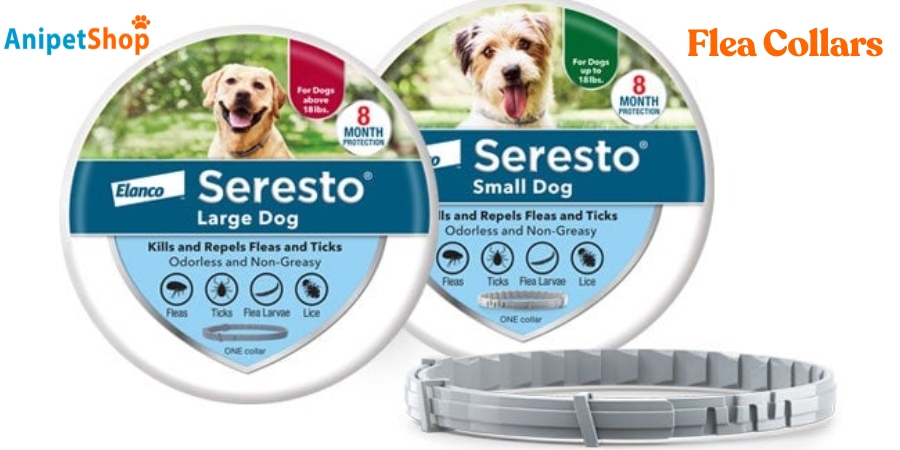
Flea Dips
To effectively eliminate fleas from your dog, flea dips offer a potent solution by immersing the pet in a specially formulated chemical bath. This method involves submerging the dog in a solution that contains insecticides designed to kill and repel fleas. Flea dips are particularly effective for severe infestations, providing immediate relief by eliminating adult fleas on contact.
The application process for flea dips is straightforward yet requires careful handling to ensure both safety and efficacy. The dog should be thoroughly wet before the dip is applied, ensuring even distribution of the chemical solution over the entire body. It is important to avoid contact with the pet’s eyes, nose, and mouth to prevent irritation or ingestion of the chemicals. Following the recommended exposure time, the dog should be rinsed off and dried thoroughly.
While flea dips can be highly effective, it is important to consider the potential risks and side effects associated with their use. Some dogs may experience skin irritation, allergic reactions, or other sensitivities to the chemicals in the dip. It is advisable to consult a veterinarian prior to use, especially for dogs with pre-existing health conditions or those that are very young, elderly, or pregnant.
In addition to their immediate impact on adult fleas, flea dips do not typically provide long-lasting protection. Therefore, they should be used in conjunction with other flea control measures to maintain a flea-free environment for your pet. Regular cleaning of the dog’s bedding and living areas, as well as routine grooming, can supplement the effectiveness of flea dips.
Ultimately, flea dips serve as an essential component of a thorough flea management strategy, delivering rapid relief from infestations while paving the way for longer-term preventive measures.
Powders and Sprays
Powders and sprays represent versatile and convenient options for managing and preventing flea infestations on your dog. These products offer a practical solution for pet owners seeking immediate and effective flea control without the need for extensive procedures or treatments.
Flea powders, in particular, can be easily applied to your dog’s coat, providing an immediate deterrent to fleas while also killing existing ones. The powder works by dehydrating the fleas, thereby breaking their life cycle and preventing further infestation.
Sprays, on the other hand, offer a more targeted and often longer-lasting approach. They can be applied directly to your dog’s fur and skin, ensuring that the active ingredients reach the areas where fleas are most likely to hide and breed. Many flea sprays contain insect growth regulators (IGRs) that not only kill adult fleas but also inhibit the development of flea eggs and larvae. This dual action makes sprays an effective means of not just treating an existing problem but also preventing future outbreaks.
When using powders or sprays, it is essential to follow the manufacturer’s instructions carefully to guarantee the safety and well-being of your pet. Over-application or improper use can lead to skin irritation or other health issues. Additionally, it is advisable to consult with your veterinarian before introducing any new flea control products to your pet’s regimen, especially if your dog has pre-existing health conditions.
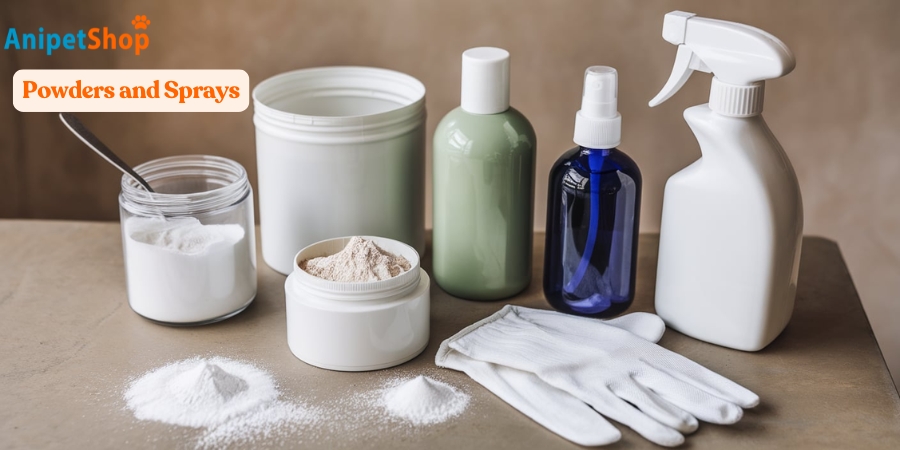
Clean House
Keeping a neat house is crucial in effectively preventing fleas from infesting your dog and home. Fleas thrive in environments where they can find suitable hiding spots and easy access to hosts. By maintaining your home meticulously clean, you disrupt the flea life cycle and decrease the likelihood of an infestation.
Vacuuming regularly is one of the most impactful measures. Focus on areas where your dog frequently rests, such as carpets, rugs, and furniture. Vacuuming not only eliminates adult fleas but also their eggs, larvae, and pupae. Dispose of the vacuum bag or empty the canister outside to prevent re-infestation.
Washing your dog’s bedding in hot water and drying it on high heat is another crucial step. Fleas and their eggs cannot withstand high temperatures, making this an efficient method for eliminating them. Additionally, consider washing other fabric items that your dog frequently contacts, such as blankets or cushions.
Maintaining a clutter-free environment further aids in flea prevention. Clutter provides fleas with numerous hiding spots and makes cleaning more challenging. Keeping floors and surfaces tidy minimizes potential flea habitats and ensures that your cleaning efforts reach all necessary areas.
Pay special attention to areas where your dog spends a lot of time. Fleas often lay eggs in these locations, and a thorough cleaning regime can greatly reduce their numbers. Remember to clean under furniture and in corners, as these are common hiding spots for fleas.
Household Sprays and Foggers
Household sprays and foggers are effective tools for eradicating fleas within your home environment. These products work by dispersing insecticides that target fleas at various stages of their life cycle, thereby reducing their population and preventing them from infesting pets.
Household sprays are particularly useful for treating specific areas where fleas are likely to congregate, such as pet bedding, carpets, and furniture. Many sprays contain ingredients like pyrethrins, permethrins, or insect growth regulators (IGRs) that not only kill adult fleas but also inhibit the development of eggs and larvae. It is crucial to follow the manufacturer’s guidelines closely to ensure the safety of both pets and humans. Always ventilate the treated areas and keep pets away until the spray has dried completely.
Foggers, or flea bombs, offer a more thorough approach by releasing a fine mist that permeates an entire room, reaching areas that sprays might miss. These products are ideal for severe infestations or for treating multiple rooms simultaneously. However, the use of foggers requires careful preparation. All individuals and pets must vacate the premises for a specified period, usually a few hours, to avoid exposure to the chemicals. Additionally, food, dishes, and delicate items should be covered or removed from the treated area.
While household sprays and foggers are potent tools in the battle against fleas, they should be part of an integrated pest management approach. This includes regular vacuuming, washing pet bedding, and using veterinarian-recommended flea preventatives on your dog. By combining these methods, you can create a comprehensive strategy to keep your home and your pet flea-free.
Flea Traps
Flea traps offer a non-toxic and straightforward method for monitoring and reducing flea populations in your home. These traps are designed to attract and capture fleas, providing an effective tool for evaluating the extent of an infestation and decreasing the number of fleas present.
Typically, flea traps consist of a light source and a sticky pad. Fleas are drawn to the warmth and light emitted by the trap, mistaking it for a potential host. Once they jump towards the light, they become ensnared on the adhesive surface, making it hard for them to escape.
One of the primary benefits of using flea traps is their safety. Unlike chemical treatments, flea traps do not introduce potentially harmful substances into your living environment. This aspect is particularly vital for households with children, pets, or individuals with sensitivities to chemicals. Additionally, flea traps are easy to use and require minimal maintenance. Simply place the trap in areas where flea activity is suspected, such as near pet bedding or in high-traffic zones.
For best results, it is advisable to use multiple traps simultaneously, especially in larger homes. Regularly checking and replacing the sticky pads ensures continuous effectiveness.
While flea traps alone may not eradicate a severe infestation, they can notably reduce flea populations when used in conjunction with other preventative measures. Furthermore, these traps provide valuable insights into the severity and distribution of fleas within your home, enabling you to tailor your pest control strategies more effectively.
Clear the Yard
An essential step in preventing fleas from biting your dog is to regularly clear and maintain your yard. This outdoor environment often serves as a breeding ground for fleas, which can easily latch onto your dog and invade your home. By taking proactive measures to keep your yard flea-free, you can greatly reduce the risk of infestation.
Firstly, regularly mow your lawn and trim any overgrown vegetation. Fleas thrive in tall grass and dense shrubbery, where they can easily hide and multiply. Keeping your yard well-manicured reduces the potential habitat for fleas and exposes them to sunlight, which they find unwelcoming.
Secondly, remove any debris such as fallen leaves, branches, and organic matter where fleas might find shelter. These materials provide a moist and shaded environment conducive to flea development. Regularly raking and disposing of such debris helps to eliminate these flea-friendly conditions.
Consider applying non-toxic flea control products to your yard. Diatomaceous earth, for instance, is a natural powder that dehydrates and kills fleas on contact. Sprinkling this around areas where your dog frequently roams can offer an added layer of protection. Additionally, nematodes, which are microscopic worms, can be introduced into the soil to feed on flea larvae, effectively breaking the flea life cycle.
Lastly, limit wildlife access to your yard. Animals like raccoons, squirrels, and feral cats can carry fleas, introducing them to your property. Secure trash bins, use fencing, and remove any potential food sources to discourage these animals from entering your yard.
Implementing these strategies not only creates a healthier outdoor environment for your dog but also plays an essential role in the all-encompassing approach to flea prevention.
Frequently Asked Questions
How to keep fleas from biting your dog?
To ensure your pet’s safety and health, limit their outdoor time if you can’t supervise them. Regularly clean your pet using warm water and soap, and consult your vet about using medicated flea shampoo if needed. Avoid getting the soap in your pet’s eyes or mouth.
How do essential oils help in preventing fleas on dogs?
Essential oils such as lavender, eucalyptus, and cedarwood can repel fleas. Dilute them properly and apply them safely to your dog’s fur. Never use essential oils without veterinary guidance, as some can be toxic to pets.
Can apple cider vinegar really help in flea prevention?
Yes, apple cider vinegar can create an acidic environment on your dog’s skin that fleas find unattractive. Mix equal parts of apple cider vinegar and water, and spray it lightly onto your dog’s coat. Ensure your dog does not have any open wounds before applying.
How does diatomaceous earth work against fleas?
Diatomaceous earth is a natural powder that can kill fleas by dehydrating them. Use food-grade diatomaceous earth and sprinkle it lightly onto your dog’s coat and around areas where your dog frequently lies down. Avoid inhalation and consult a vet for proper usage.
How can I maintain a flea-free living environment?
To maintain a flea-free home, vacuum carpets and furniture regularly, wash pet bedding frequently, and use flea sprays or powders if necessary. Keeping your home clean reduces the chances of a flea infestation.
Conclusion
Implementing a multifaceted approach to flea prevention is essential for safeguarding dogs from bites and potential health complications. Combining spot-on treatments, oral medications, flea shampoos, collars, and dips with thorough cleaning practices, household sprays, foggers, and flea traps can notably reduce the likelihood of infestations.
Additionally, maintaining a clear and well-kept yard further contributes to a flea-free environment. By following these effective methods, the health and comfort of dogs can be greatly improved.
References:
- Dryden, M. W. (2020). Flea and tick control in the United States for dogs and cats: Challenges and opportunities. Veterinary Parasitology: Regional Studies and Reports, 20, 100388. https://doi.org/10.1016/j.vprsr.2020.100388
- Centers for Disease Control and Prevention. (2021). Fleas. In CDC yellow book 2020: Health information for international travel. Oxford University Press. https://www.ncbi.nlm.nih.gov/books/NBK541118/
- Cornell University College of Veterinary Medicine. (n.d.). Flea and tick prevention. https://www.vet.cornell.edu/departments-centers-and-institutes/riney-canine-health-center/canine-health-information/flea-and-tick-prevention
- Centers for Disease Control and Prevention. (n.d.). Preventing flea bites. https://www.cdc.gov/fleas/prevention/index.html
Lily Watson is an author specializing in veterinary care in Australia. With a profound passion for animal welfare and a solid foundation in veterinary science, Lily has dedicated herself to disseminating valuable knowledge and information for both pet owners and professionals in this field.

